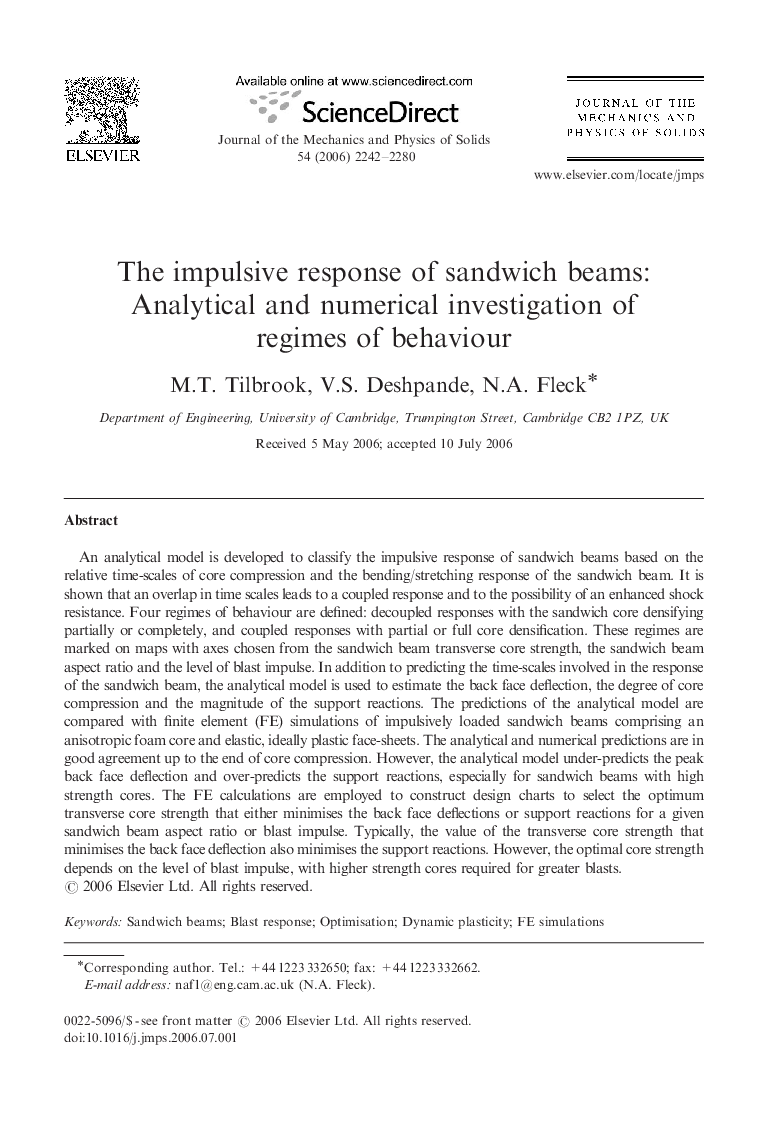| Article ID | Journal | Published Year | Pages | File Type |
|---|---|---|---|---|
| 800193 | Journal of the Mechanics and Physics of Solids | 2006 | 39 Pages |
An analytical model is developed to classify the impulsive response of sandwich beams based on the relative time-scales of core compression and the bending/stretching response of the sandwich beam. It is shown that an overlap in time scales leads to a coupled response and to the possibility of an enhanced shock resistance. Four regimes of behaviour are defined: decoupled responses with the sandwich core densifying partially or completely, and coupled responses with partial or full core densification. These regimes are marked on maps with axes chosen from the sandwich beam transverse core strength, the sandwich beam aspect ratio and the level of blast impulse. In addition to predicting the time-scales involved in the response of the sandwich beam, the analytical model is used to estimate the back face deflection, the degree of core compression and the magnitude of the support reactions. The predictions of the analytical model are compared with finite element (FE) simulations of impulsively loaded sandwich beams comprising an anisotropic foam core and elastic, ideally plastic face-sheets. The analytical and numerical predictions are in good agreement up to the end of core compression. However, the analytical model under-predicts the peak back face deflection and over-predicts the support reactions, especially for sandwich beams with high strength cores. The FE calculations are employed to construct design charts to select the optimum transverse core strength that either minimises the back face deflections or support reactions for a given sandwich beam aspect ratio or blast impulse. Typically, the value of the transverse core strength that minimises the back face deflection also minimises the support reactions. However, the optimal core strength depends on the level of blast impulse, with higher strength cores required for greater blasts.
